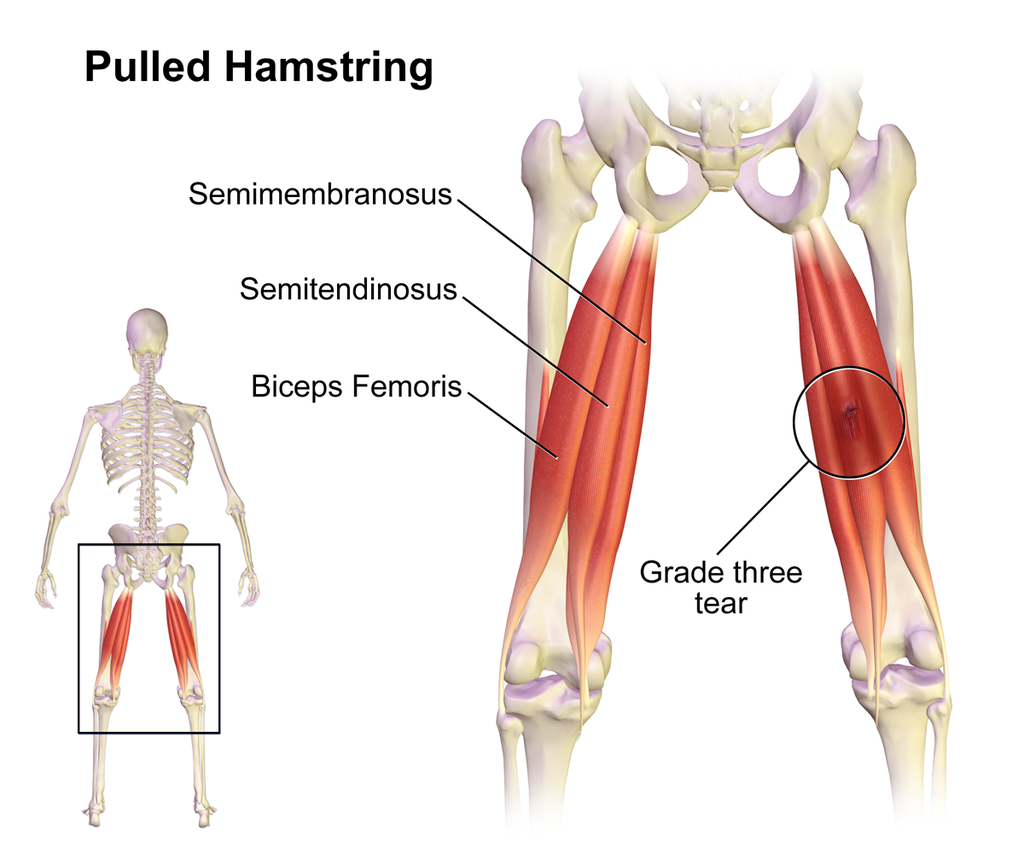Hamstring Injury Therapy Saratoga, Queensbury, Glens Falls
Hamstring injuries are some of the most common injuries among athletes worldwide. Even professional players at the highest levels of sport are affected, with the NFL reporting 176 occurrences of hamstring injuries each season. These injuries are troublesome not only for patients, but for clinicians, as well. With frequent incidence and an even higher rate of recurrence, many athletes are plagued by chronic issues for years after their initial injury, and treating repeat injuries can be challenging. Recognizing signs of trauma and seeking proper physical therapy treatment for hamstring injuries can help to reduce pain levels, restore proper range of motion, and get you back on the road to recovery.
Function of the Muscle
The hamstring is composed of three muscles, located behind the thigh and running from the hip to the lower leg. Together with the quadriceps muscles, the hamstring muscles help to bend the knees and aid in stabilizing movements of the joint. They also play a role in extending the hip during certain motions, such as squats, jumps, and runs.
Identifying Hamstring Injuries
Hamstring injuries are typically associated with a sudden high-powered movement, similar to those typically seen in athletics or competitive sports. The athlete may hear or feel a “pop” from the affected area, followed by an immediate onset of pain. They may have difficulty moving or bearing weight on the injured leg. When examining the area, tightness and tenderness at the injury site are typical; more severe injuries, such as those involving tears, may exhibit additional swelling and/or bruising.
PT Plan for Hamstring Injuries
Prompt treatment by a physical therapist is key to reducing symptoms of pain and discomfort, restoring proper movement, and preventing future reinjury. Initial therapy is primarily focused on reducing inflammation and maintaining range of motion as the body begins to heal. A standard treatment protocol of RICE–rest, ice, compression, and elevation–is recommended by many clinicians during this period. It is extremely important that the patient avoid further activity that may aggravate the injury, especially during these early phases of treatment. Resuming athletic activity too soon is a major contributing factor to reinjury, and pain related to recurring injuries may become chronic over time.
Once inflammation begins to reduce in the affected area, more intensive therapeutic measures can be introduced. The following phases of therapy are primarily focused on restoring full range of motion, along with strengthening exercises to build and stabilize the muscles. Techniques such as aquatic therapy and deep stripping massage, among others, may be applied as part of a complete therapy plan. A therapist may also provide functional training specific to the patient’s preferred sport, which may help in the prevention of future injuries.
If you have experienced a hamstring strain, tear, or other sports-related injury, contact us at Capital Area Physical Therapy at one of our PT clinics in Saratoga or Queensbury. Our experienced therapists will evaluate your pain and functionality and put together a PT plan to help you get back in the game.







